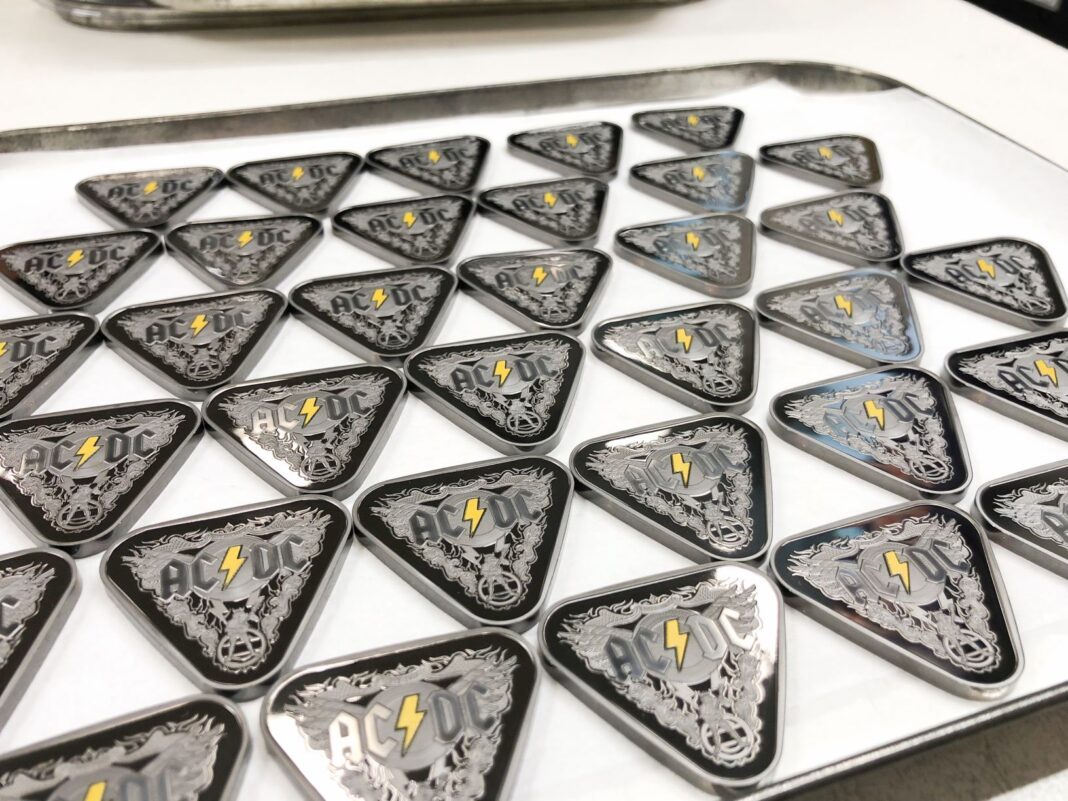The Royal Australian Mint has celebrated 45 years of Australian rock royalty by releasing a series of high voltage AC/DC coins earlier this month.
The series includes a silver $5 coin shaped like a guitar plectrum and a coloured 50c coin.
In the spirit of the band’s hit single Thunderstruck, they partnered with Questacon to strike ten of the limited run 50c coins with a bolt of man-made lightning.
The experiment was conducted in the Caged Lightning exhibition at Questacon, which produces lightning using a Tesla coil.
The pieces were Thunderstruckwith 3,500,000 volts of lightning.
“AC/DC is famous for their electrifying energy. It’s in their music, the titles of some of their songs, even their insignia,” said Royal Australian Mint CEO Ross MacDiarmid.
“We discovered that because the coins are such excellent conductors of electricity, the lightning’s mark is only visible under magnification.”
The coins that were shocked will be randomly sent to 10 customers who order their AC/DC coins through the Mint.
“To help the 10 lucky customers identify their ‘Thunderstruck’ coins, we have added unique frosting to the coin’s AC/DC logo,” Mr MacDiarmid said.
Visit eshop.ramint.gov.au for more.
Remembrance Day peace vigil denied
Plans for a peace vigil to be held by the Medical Association for Prevention of War (MAPW) on Anzac Parade this Remembrance Day have been denied by the National Capital Authority (NCA).
In response to the event application, the NCA has denied permission for the gathering to take place at their requested location.
In a brief statement, an NCA spokesperson said the reason for the denial is that on 11 November 2018, Anzac Parade (including the Memorials) has been reserved exclusively for the AWM for the 2018 Remembrance Day Commemorations.
“Once an event booking is confirmed, the venue is then not available to be reserved by another event organiser.”
MAPW President Dr Sue Wareham said she believes the denial of her association’s vigil goes against the spirit of Remembrance Day.
“We can best honour those who died by respecting the importance of the peace message rather than marginalising it.”
Professor Peter Stanley of UNSW Canberra, and former Principal Historian at the Australian War Memorial, asked rhetorically “How can a silent, dignified can and respectful vigil event on Anzac Parade conflict with the fitting remembrance of the end of the Great War?”
For more:



